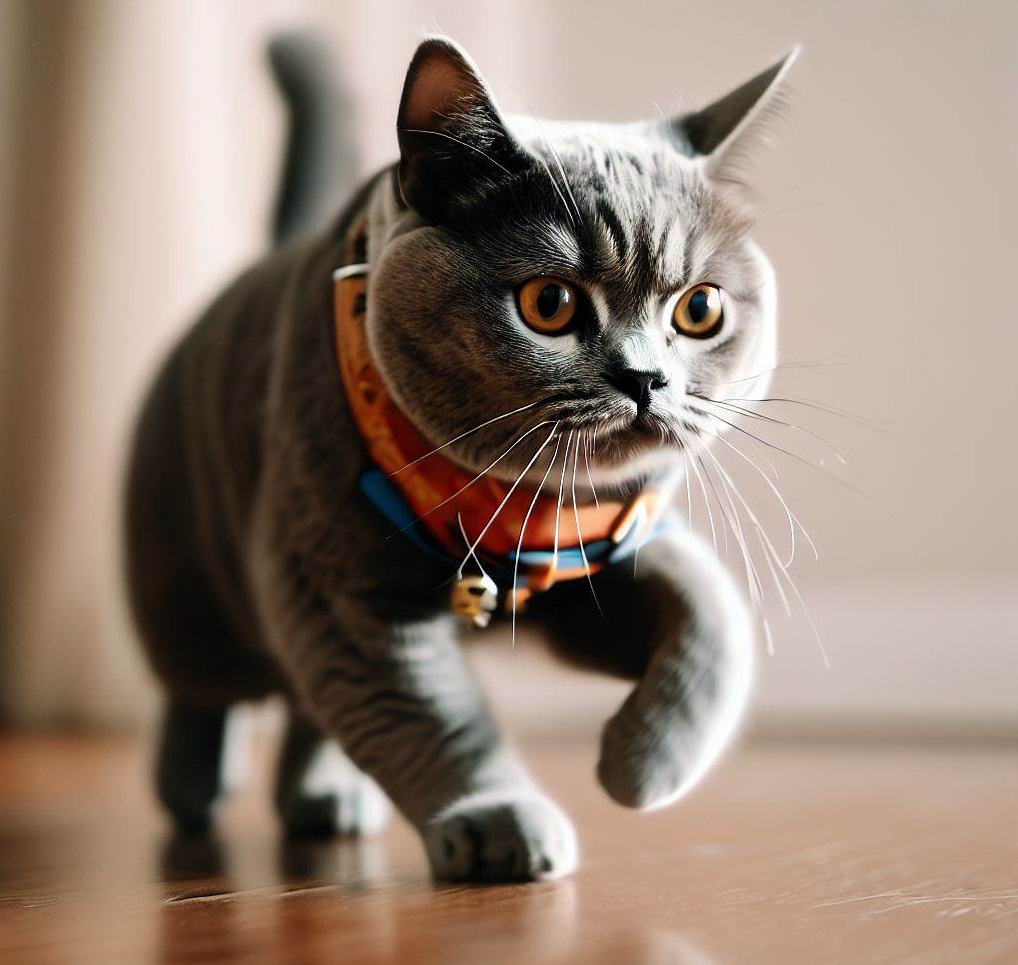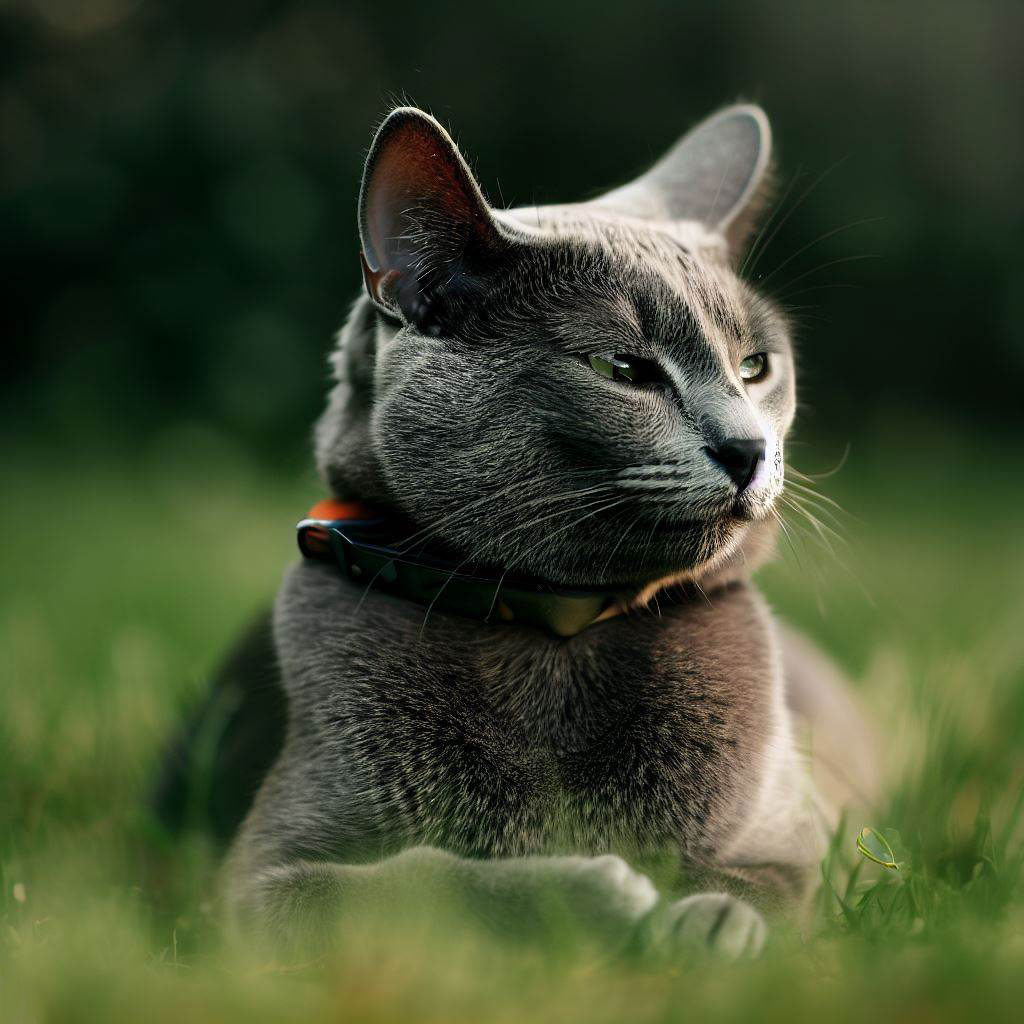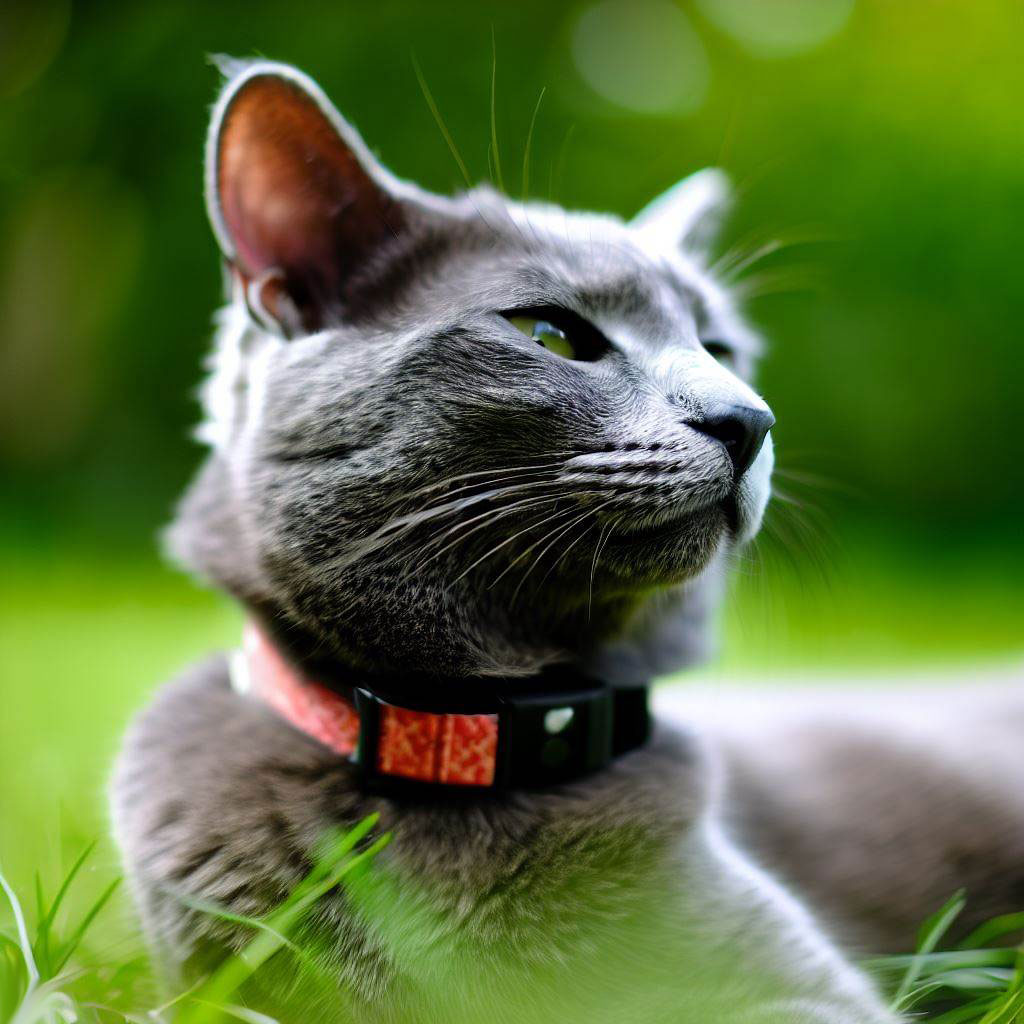What Are Cat Training Collars?
The key to training your cat is understanding their behavior and using the right tools to communicate effectively with them.
Table of Contents
Introduction: Cat Training Collars
As lifelong cat owners, we have dedicated many years to understanding the feline world. The key to training your cat is understanding their behavior and using the right tools to communicate effectively with them.
This guide is designed to help you comprehend cat behavior and introduce a key training tool – the cat training collar.
Understanding Cat Behavior
Cats are wonderfully complex creatures, possessing a wide range of behaviors and vocalizations that can be both endearing and perplexing. To effectively train your cat, it’s essential to first understand their behavior.
Cats and Their Independence
Unlike dogs, who are pack animals, cats are solitary hunters. This means they’re inherently more independent and can often be more difficult to train. Their instincts tell them to be cautious, curious, and self-reliant. This behavior is often misinterpreted as standoffishness or aloofness.
Communication Through Body Language
A significant aspect of cat behavior is their body language. A cat’s tail, for instance, can communicate a variety of emotions. A high, straight-up tail usually signals happiness and confidence, while a low or puffed-up tail can indicate fear or aggression.
Understanding these behavioral nuances is essential in using a cat training collar effectively, as it helps identify when your cat is receptive to training.
What is a Training Collar?
Once you understand your cat’s behavior, it’s time to introduce a training tool that can help bridge the communication gap between human and feline: the cat training collar.
The Role of a Training Collar
A cat training collar is a device designed to help train your cat by reinforcing certain behaviors. These collars work by associating a certain stimulus (like a sound, vibration, or even a slight static shock in some models) with a specific action you want to encourage or discourage.
Different Types
There are different types of training collars. Some emit a sound or vibration when the cat performs an unwanted behavior, creating a negative association. Others use positive reinforcement, emitting a pleasant sound or releasing a treat when the cat does something good.
For example, a vibration-basedcollar could be used to discourage a cat from scratching furniture. When the cat begins to scratch, the collar vibrates. The cat, disliking the vibration, learns to associate the unpleasant feeling with the action of scratching the furniture and is thus dissuaded from continuing that behavior.
Choosing the Right One
Choosing the right training collar depends on your cat’s temperament and the specific behaviors you want to address. It’s always crucial to prioritize your cat’s comfort and well-being, ensuring that the collar is an effective training tool rather than a source of distress.
By understanding your cat’s behavior and utilizing atraining collar effectively, you can nurture a more harmonious relationship with your feline friend.
As we delve deeper into this guide, we will explore how to choose and use a training collar, ensuring that your training efforts are successful and humane.

Types of Cat Training Collars
Over the last decade, I’ve had the opportunity to use and evaluate a wide range of training collars designed to help cats learn and grow. There are different types of cat training collars to suit various needs, behaviors, and preferences, each offering unique benefits.
Today, let’s delve into the specifics of sound-based, vibration-based, and GPS-enabled cat training collars.
Sound-based Collars
Sound-based collars utilize sound cues to correct or encourage certain behaviors. These collars emit a sound whenever your cat performs an undesirable behavior, creating a clear association that discourages the behavior.
How Does it Work?
For instance, if your cat has a habit of jumping on the kitchen counter, a sound-based training collar can emit a beep or tone when your cat jumps onto the counter. Over time, your cat will associate the sound with the unwanted action and eventually stop jumping on the counter.
This type of collar is non-invasive and relies on your cat’s natural aversion to specific sounds. It’s a fantastic choice for owners who are looking for a gentle, yet effective way to correct their cats’ behaviors.
Vibration-based Collars
Vibration-based training collars work in a similar way, but instead of using sound, they use a gentle vibration to get your cat’s attention.
Understanding the Vibration
When your cat is engaging in an undesirable behavior, such as scratching your brand new sofa, the collar will vibrate. The vibration is not harmful; it’s just unusual enough to catch your cat’s attention and disrupt the undesired behavior.
An important note is that these collars require an understanding of your cat’s temperament. For some cats, the vibration could be too much, causing stress or fear. Always monitor your cat’s response to ensure the training process is positive and effective.
GPS-enabled Collars
GPS-enabled training collars serve a dual purpose. On one hand, they function as a typical training collar. On the other hand, they provide a peace-of-mind feature for owners: GPS tracking.
The Dual Functionality
These collars can emit sounds or vibrations to discourage unwanted behaviors. But, their standout feature is the ability to track your cat’s location in real time. If you have an outdoor cat or a cat who likes to take unexpected adventures, a GPS-enabled cat training collar can be an excellent investment. It adds an extra layer of security and allows you to ensure that your feline friend is safe at all times.
The right training collar for your feline friend will largely depend on their specific needs and your training goals.
Whether you opt for a sound-based, vibration-based, or GPS-enabled cat training collar, remember that patience and consistency are key to successful cat training.
In the next section, we will explore the benefits of training collars and how they can improve your relationship with your cat.
Benefits of Cat Training Collars
From our experience, the cat training collar is one of the most effective tools available. These devices can assist in resolving behavioral issues and enhancing the bond between you and your feline friend.
Let’s delve into the benefits of a cat training collar, focusing on safety, effective training, and GPS tracking alongside health monitoring.
Safety and Security
First and foremost, the cat training collar is designed to provide safety and security for your pet.
Preventing Dangerous Behaviors
By using a sound-based or vibration-based collar, you can discourage behaviors that might put your cat at risk. For example, you might use the collar to train your cat to stay off the kitchen counters, preventing them from accidentally ingesting something harmful or knocking over dangerous objects.
Keeping Your Cat Close
For outdoor cats, a cat training collar can be used to establish boundaries. You can use it to teach your cat to stay close to home and away from dangerous areas like busy roads. Whether you live in a house or an apartment, they will be beneficial in both environments.
Effective Training Tool
Secondly, a cat training collar can be a highly effective tool for shaping your cat’s behavior.
Addressing Unwanted Behaviors
Unwanted behaviors, like scratching furniture or jumping on tables, can be quickly addressed with a cat training collar. The collar provides immediate feedback, allowing your cat to make a clear connection between their action and the collar’s response.
Positive Reinforcement
Moreover, some cat training collars can also be used to reinforce positive behaviors. For instance, you can trigger the collar to make a pleasant sound when your cat uses their scratching post or litter box correctly.
GPS Tracking and Health Monitoring
Lastly, a new breed of cat training collars come with advanced features like GPS tracking and health monitoring.
GPS Tracking
A GPS-enabled cat training collar is invaluable for cat owners whose pets love to explore. With real-time location updates, you’ll always know where your feline friend is. In the event your cat wanders too far, you can find them quickly and easily.
Health Monitoring
Some advanced cat training collars also offer health monitoring features. These collars can track your cat’s activity levels, sleep patterns, and even their heart rate. This information can be incredibly useful in tracking your cat’s overall health and detecting potential health issues early.
A cat training collar is more than just a training tool, .t can greatly enhance the quality of life for both you and your cat by promoting safety, effective training, and health monitoring.
Next, we’ll explore how to choose the right cat training collar for your feline friend’s unique needs.

Choosing the Right Cat Training Collar
Choosing the right cat training collar can make a significant difference in your training experience. But with so many options on the market, how do you know which one is the best fit for your feline friend?
Here, we’ll discuss the factors to consider when buying a cat training collar and recommend some top brands for you to consider.
Factors to Consider When Buying
When selecting a cat training collar, consider your cat’s size, temperament, and specific training needs.
Size and Comfort
First, the collar must fit your cat comfortably. Too loose, and it could slip off; too tight, and it could cause distress. Look for a cat training collar that offers adjustability to ensure a proper fit.
Type of Training
Next, consider the type of training you plan to do. If your goal is to correct unwanted behaviors, a sound or vibration-based collar could be beneficial. However, if your cat loves to explore outdoors, a GPS-enabled cat training collar would be more appropriate.
Your Cat’s Sensitivity
Lastly, take into account your cat’s sensitivity. Some cats may react negatively to certain stimuli. If your cat is particularly skittish, it might be best to opt for a sound-based collar over a vibration-based one.
Top Recommended Brands
Over the years, several brands have earned a strong reputation for their high-quality training collars.
Tractive
Tractive is a popular brand that offers GPS cat collars. The collars are lightweight and waterproof, providing real-time location tracking for your feline friend. They also offer activity tracking, which can be a useful feature for monitoring your cat’s health and behavior.
PetSafe
PetSafe is renowned for its range of pet products, and their cat training collars are no exception. They offer collars with different training modes, including sound and vibration, ensuring you’ll find a fit for your cat’s needs.
Garmin
If you’re looking for a GPS-enabled cat training collar, Garmin is a top pick. Their collars combine GPS functionality with training features, providing a comprehensive solution for adventurous felines.
We can’t stress enough, every cat is unique, and what works best for one might not work as well for another.
Take the time to research and consider your options when choosing a cat training collar, and you’ll be well on your way to successful, stress-free training.
Using Cat Training Collars Effectively
Once you’ve selected the ideal cat training collar for your feline friend, it’s crucial to understand how to use it effectively.
The effectiveness of a cat training collar largely depends on correct use and pairing it with consistent training commands.
Here, we’ll guide you through introducing the cat training collar to your cat and how to use both sound-based and vibration-based cat training collars effectively.
Introducing the Training Collar to Your Feline Friend
Introducing a new device like a training collar should be done gradually and positively. Begin by letting your cat sniff and investigate the collar. Once your cat seems comfortable with its presence, attach the collar, making sure it’s not too tight or loose.
Reward your cat with a treat or affection after the collar is on, creating positive associations from the outset.
How to Use a Sound-based Collars
A sound-based cat training collar can be a fantastic tool for training your cat and discouraging undesirable behaviors. It works by emitting a sound in response to certain actions.
For instance, if your cat has a habit of scratching your furniture, jumping on your bed or climbing a bookshelf, trigger the collar to emit a sound immediately when they begin.
It’s vital to create a clear association between the sound and the behavior. Over time, your cat should start associating the sound with the undesirable behavior and stop the activity.
How to Use a Vibration-based Collars
A vibration-based cat training collar functions similarly, but it uses vibrations instead of sound. The key is immediate feedback.
Let’s say your cat likes jumping onto the kitchen counter. As soon as your cat leaps onto the counter, trigger the collar to vibrate. This immediate feedback will help your cat make a connection between the action and the consequence, helping to discourage the behavior over time.
Training Commands to Pair With Your Collar
Pairing your cat training collar with consistent verbal commands can enhance its effectiveness.
For example, if you’re using a sound-based collar to discourage your cat from jumping on counters, accompany the sound with a firm “No” or “Off.”
Similarly, when using a vibration-based collar to stop your cat from scratching furniture, you might pair the vibration with a command like “No scratch.”
It’s important to use a consistent command each time. Over time, your cat will associate the command and the collar’s response with the unwanted behavior, reinforcing the training effect.
Using a collar effectively requires patience, consistency, and an understanding of your cat’s behavior. Remember, the goal is not to cause fear or stress, but to guide your cat towards better behaviors. In the upcoming sections, we’ll address some common concerns and questions about using a cat training collar in our FAQ section below.
Maintaining and Troubleshooting Your Cat Training Collar
Even after choosing the perfect cat training collar for your puss and learning how to use it effectively, your journey doesn’t stop there.
Regular maintenance and troubleshooting are crucial for ensuring the longevity and effectiveness of your cat training collar. Let’s dive into these two key areas.
Regular Maintenance
Regular maintenance of your cat training collar helps ensure it continues to function properly and keeps your cat safe and comfortable.
Cleaning
Just like your cat’s regular collar, the training collar can collect dirt and debris. Use a damp cloth to wipe down the collar regularly. Avoid harsh detergents or cleaners that could irritate your cat’s skin.
Batteries and Charging
If your training collar is battery-operated, make sure to replace the batteries as soon as they run low. If it’s rechargeable, establish a routine for charging to ensure it’s always ready when you need it.
Inspection
Periodically inspect the collar for signs of wear and tear. Check for any frayed wires, loose parts, or damage to the collar itself. If you notice any of these issues, it may be time to replace the collar or parts of it.
Dealing with Common Issues
Despite regular maintenance, you might encounter some common issues with your cat training collar. Here’s how to troubleshoot them.
Ineffectiveness
If your training collar seems ineffective, check to make sure it’s properly fitted. An improperly fitted collar may not provide the intended feedback.
Discomfort
If your cat shows signs of discomfort or distress when wearing the collar, it might be too tight, or they could be sensitive to the type of stimulus it provides. Adjust the fit or consider switching to a different type of cat training collar.
Maintaining and troubleshooting your cat training collar is essential for successful training and the overall wellbeing of your cat.
Remember, the purpose of a cat training collar is to guide your feline friend towards better behaviors, so their comfort should always be a priority.

Conclusion
As we wrap up this guide, let’s take a moment to reflect on the role a training collar can play in a cat’s life.
The Role of a Training Collar in a Cat’s Life
A training collar can be a powerful tool in a feline’s life, serving multiple roles.
Training Aid
First and foremost, it functions as a training aid, providing immediate and consistent feedback that helps guide your cat towards desired behaviors. For instance, a sound-based training collar can deter a cat from scratching furniture, while a vibration-based collar can prevent counter surfing.
Safety Device
Beyond training, a training collar, especially a GPS-enabled one, can be a valuable safety device. It allows you to keep track of your cat’s whereabouts, offering peace of mind when your furry explorer ventures outside.
Health Monitor
Some advanced training collars also have features to monitor your cat’s health, tracking activity levels and even vital signs.
In conclusion, a cat training collar is more than a simple gadget. It’s a tool that can contribute significantly to your cat’s safety, wellbeing, and quality of life, and enhance your relationship with your feline friend.
With the right choice and proper use, a cat training collar can make a positive difference in your cat training journey.
FAQs: What You Need To Know
In this section, we’ll address some common questions about cat training collars to provide clarity and help you make informed decisions for your feline friend.
What is a cat training collar and how does it work?
A cat training collar is a device designed to help modify certain behaviors in cats. Depending on the type, it can emit a sound, vibration, or provide GPS tracking. The sound or vibration serves as a cue, discouraging unwanted behaviors, while the GPS tracking feature helps keep track of your cat’s location.
Are they safe to use?
Yes, when used correctly, cat training collars are safe. It’s important to ensure the collar is correctly fitted, not too tight or loose, and that you’re using the collar as a training aid, not as a punishment tool. If you notice any signs of distress in your cat, it’s crucial to reassess its use.
How long does it take to train a cat using a training collar?
Training duration can vary greatly depending on the cat, the behavior you’re trying to change, and how consistent you are with the training. Some cats may show improvement within a few weeks, while others may take a few months. Patience and consistency are key to successful cat training.
Can you use them on kittens?
While training collars can be used on kittens, it’s generally recommended to wait until they are older and more physically developed. Check with your vet to determine the appropriate age.
Do all cats respond to training collars?
Each cat is unique, and responses can vary. Some cats may respond well to a sound-based collar, while others may react better to a vibration-based collar. It’s crucial to monitor your cat’s reaction and adjust accordingly.
How often should I use it?
You should use the cat training collar as needed during training sessions and when you’re observing the behavior you want to change. Continuous use is not recommended, as it could cause stress and confusion for your cat.
Can I let my cat wear it all the time?
While some collars, especially GPS ones, can be left on most of the time, it’s generally recommended to remove the collar when not in use to give your cat a break.
What should I do if my cat reacts negatively to it?
If your cat reacts negatively, first check the fit and adjust if needed. If the negative reaction persists, it might be worth trying a different type of collar or seeking advice from a professional cat trainer or vet.
Are there alternatives?
Yes, other training methods include positive reinforcement training, clicker training, and environmental modification. Remember, each cat is unique, and what works for one may not work for another.
How can I ensure that I am using the collar effectively and humanely?
Using a cat training collar effectively and humanely means using it as a training tool, not a punishment device. Ensure the collar is comfortable, provide immediate feedback, and always pair the collar’s response with a consistent command.
Your goal should be to guide your cat towards better behaviors. If in doubt, seek advice from a professional cat trainer.






